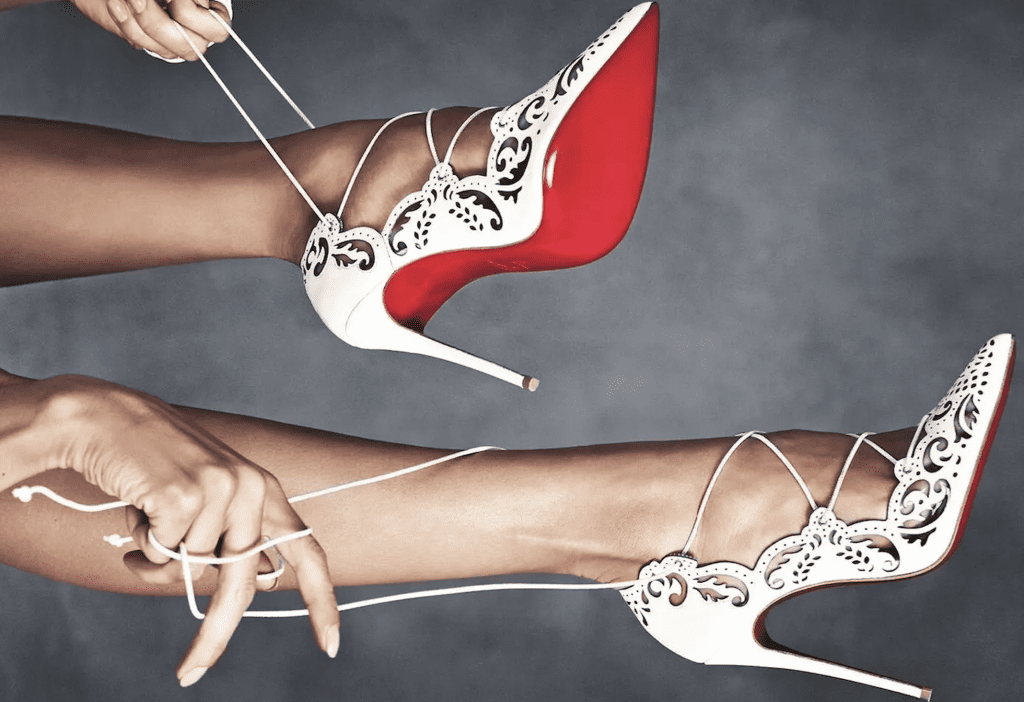Does advertising – and ultimately, delivering – goods that bear a trademark that is identical or otherwise similar to another party’s registered mark without their authorization amount to direct infringement? An advisory opinion issued this week by an advisor to the Court of Justice of the European Union (“CJEU”) says no. In what could pave the way for a noteworthy outcome in a couple of cases that pit Christian Louboutin against Amazon over the advertising and sale of counterfeit footwear, Advocate General Maciej Szpunar of the CJEU issued a non-binding opinion on Thursday, stating that Amazon “cannot be held directly liable for infringements of the rights of trademark holders taking place on its platform as a result of commercial offerings by third parties.” The court is expected to follow Szpunar’s opinion when it issues its binding ruling later this year.
In the two separate – but very similar – cases that were referred to the CJEU for consideration from lower courts in Luxembourg (C-148/21) and Belgium (C-184/21), Louboutin argues that by regularly advertising – and fulfilling orders for – third party-produced footwear bearing a red sole that is identical to its famed trademark (i.e., trademark-infringing footwear), Amazon is on the hook for direct infringement. In light of Amazon’s “hybrid business model,” in furtherance of which it acts as a marketplace operator and a provider of logistics services for third parties (and still yet, as a seller of its own private label products), the two referring courts have asked the CJEU to determine “whether the operator of such an online sales platform can be held directly liable for the infringement of the rights of trademark proprietors on its platform,” Szpunar stated in his opinion this week.
In a nutshell, these newly-joined cases ask the CJEU to determine whether – and, if so, in what conditions – the operator of an online marketplace may be found liable under Article 9(2) of the EU Trade Mark Regulation 2017/1001 for the display of advertisements of infringing goods and for the delivery of those infringing goods that are offered for sale and placed in the market by independent sellers that make use of the marketplace operator’s services,” according to Eleonora Rosati, a Professor of Intellectual Property Law and Director of the Institute for Intellectual Property and Market Law at Stockholm University.
A finding of direct infringement in the cases at hand would require use of Louboutin’s red sole mark by Amazon, itself, which Szpunar is not at play here. Pointing to settled case-law from the CJEU, including in the Coty Germany GmbH v Amazon Services Europe Sàrl and L’Oréal SA v. eBay International cases, Szpunar states that the court has held that “the act of use by an internet intermediary presupposes, ‘at the very least, that that third party uses the [trademark] in its own commercial communication.’” (Emphasis courtesy of the CJEU.) In other words, the internet intermediary (Amazon here) must make use of the trademark in communications aimed at promoting its own activities, products, or services, and that such use “should be applied from the perspective of a user of the platform in question.”
While “the commercial offerings of third parties and of Amazon are presented uniformly [on Amazon’s marketplace] and each includes the logo of Amazon,” Szpunar asserts that “it is always specified, in the advertisements, whether the goods are sold by third-party sellers or sold directly by Amazon.
With the foregoing in mind, the Advocate General determined that Amazon is not on the hook for third parties’ infringing footwear in a direct infringement capacity. “The mere fact that Amazon’s advertisements and those from third-party sellers appear next to each other does not entail that a reasonably well-informed and reasonably observant internet user might perceive the [trademarks] displayed on the advertisements of third-party sellers as an integral part of Amazon’s commercial communication,” Szpunar’s opinion reads. “The same applies to the additional services of assistance, stocking and shipping of goods bearing a [trademark] identical to a trademark, in respect of which Amazon has also actively contributed to the preparation and publication of the offers for sale.”
In short: Szpunar is “of the opinion that, in [such] circumstances, the operator of an online platform, such as Amazon, does not use a [trademark],” and therefore, cannot be directly liable for infringement. This does not mean, however, that Amazon is necessarily off the hook for infringement on the basis of contributory liability.
The importance of these referrals (and the CJEU’s ultimate opinion on the matter) to trademark law – and intellectual property, more generally – “cannot be overstated,” according to Rosati. The answer to the question of whether the operator of an online marketplace, such as Amazon, may be held directly liable for trademark infringement because of advertisements of third-party infringing goods displayed on such a marketplace and delivery of those goods to end customers will define who can be held liable for trademark infringement and on what basis (primary/direct or secondary/indirect).














